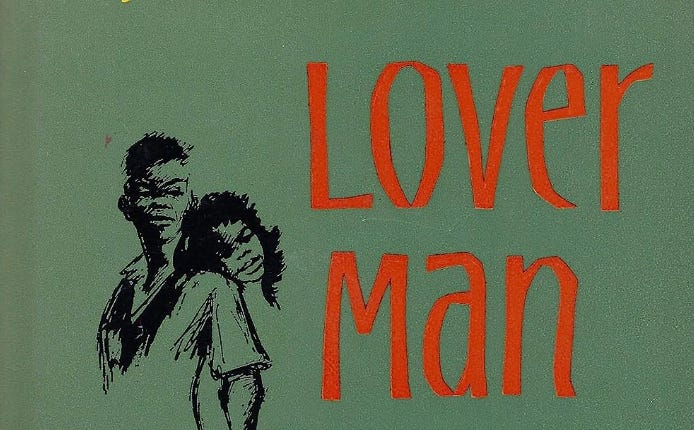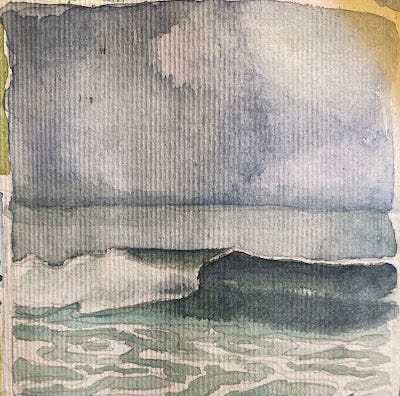Recording a Future King
“Life has become immeasurably better since I have been forced to stop taking it seriously.”― Hunter S. Thompson
The red button in the recording studio is a magical button. It is a button of possibilities. Press it, and suddenly the sound hitting the set-up microphones gets trapped in time, recorded onto tape which can be played again and again and again. And in those moments where everything falls into place…the musicians are in their ethereal plane…their instruments are pushing the molecules of air around them in such a way that a mysterious, harmonious force enters the room: that is when the red button records Truth. Beauty.
Seventy years ago today, a young truck driver walked into a Memphis recording studio, threw down four dollars to press that red button and record two cover songs from the hit parade. In those days, you could record directly onto acetate, cutting recorded grooves into a blank disc you could take with you on the spot. Some say Elvis did it as a gift to his mother, some say it was through the urging of a friend, some say it was to get himself discovered, but when Elvis Presley went into Memphis Recording Service, owned by Sun Records owner Sam Phillips, the magic that was the first recorded sound of one of the greatest popular artists of all time was captured.
Elvis’s family had moved to Memphis when he was in High School. He was a shy outcast in school, spending time alone falling in love with black music by listening to WDIA, falling in love with country music as well. By the time he was a senior, he had grown sideburns and started slicking his hair back. Owning a Lansky suit was next. He was already adopting the flashy image he would take with him to fame.
Elvis was hanging out with the bluesmen on Beale Street. B B King would later recall being with Elvis during those early days. Elvis started taking guitar lessons from another local musician, Lee Denson (who would go on to record the single Climb Love Mountain/New Shoes, the latter song featuring a young Eddie Cochran) and Elvis and Denson would hang out with Denson’s childhood friends, Johnny and Dorsey Burnette, who would go on to be rockabilly stars in their own right having hits such as The Train Kept A Rollin’, Tear It Up (covered crazily by The Cramps), and Lonesome Train (On a Lonesome Track). Elvis might have shot to success out of no where, but he came from a rich Memphis scene, surrounding himself with great musicians.
As legend has it, an old high school classmate Edwin Leek, Jr. talked Elvis into going to the studio that Sam Phillips owned to record a few tracks he had been working up (in some tellings of the story, it was Leek that gave Elvis the money for the recording). Phillips was not there, leaving the session to be run by Phillips’ assistant Marion Keisker. That day Elvis cut to acetate My Happiness, a song that was originally a hit for Jon and Sondra Steele in 1948 (covered by Ella Fitzgerald that same year) and That's When Your Heartaches Begins, first made popular (again in 1948) by The Ink Spots. Those two ballads were sung so quietly by Elvis, who accompanied himself so gently on guitar. Keisker took Elvis’ phone number and wrote a note to her boss about how promising of a ballad singer he was.
Elvis ended up leaving the acetate with Leek who held onto it for decades until he died. It was passed on to a family member who auctioned it off, getting $300,000 for it. The winning bidder? Jack White, who took the acetate and reissued it on his label, Third Man Records.
As for Elvis, after a few more failed auditions, he and Sam Phillips came out of a recording session with an Arthur Crudup cover of That’s All Right, which became Elvis’ first hit record…and the rest is history.
It all started today, July 18th 1953…when Elvis got in front of a microphone and for the first time, the red recording button was pressed alive.
Top 25 Most Expensive Items Sold on Discogs in June 2023
The 4 Dynamics top the list with their 1970 soul single single That’s What Girls Are Made For selling for $5978 followed closely with another soul single (Northern Soul this time) by Lou Pride, I’m Com’un Home In The Morn’un, coming in at $5000 and yes ANOTHER Soul single The Nomads’ Somethin’s Bad on Mo-Groov records priced at $4,891 (I wonder if the same person bought all three). Two psychedelic records round off the top five of a very interesting list, Mary Butterworth’s self titled ($4347) (ohhhh yeah, the one I would want) and Obsession ’77 by Atomic Forest ($3804) (Indian psych).
Laura Baker’s Painting Box presents: THE ELEMENTS PART ONE...WATER
It has been a while since Laura Baker has given us her next installment from her wondrous Painting Box. Each time, Laura takes a theme and “paints” it through images she curates: sketches, photographs, paintings, prints…woven together with poetic commentary creating a deep, engrossing meditation (and this one features a soundtrack by Marisa Anderson!). Not only dazzling to look at, but it also turns me on to artists I have never heard of (like Gioacchino La Pira…who painted the image above….whose Vesuvius paintings might have hit my radar in college). From the title, it looks like she will be tackling the elements…water being the first. So good.
There is a fantastic article I read over the weekend in the New York Review of Books about Alston Anderson but you have to be a subscriber to read it…this one above is good too, while not diving as deeply into some of the details that Darryl Pinckney does. But given those are the only two articles that I could find that are celebrating the reissue of Anderson’s work…the one above will suffice.
George Saunders to Receive Library Prize for American Fiction
“The annual Prize for American Fiction honors an American literary writer whose body of work is distinguished not only for its mastery of the art but also for its originality of thought and imagination.” E.L. Doctorow, Don DeLillo, Toni Morrison, Colson Whitehead, Philip Roth are some past recipients.
You have to submit your e-mail to read this article…but it is worth it.
Like an ‘Exposed Nervous System,’ Ilana Savdie’s Whitney Show Captures Collective Dread
We are living in a time of collective dread and anxiety about where things are going politically, environmentally, socioeconomically, and there’s exhaustion in the collective psyche. We’re all struggling to find a space of vulnerability in our rage. I’ve been channeling this into painting. In the studio, I’m an exposed nervous system and it comes out in this work. But we’re all experiencing a sort of similar exhaustion. And I hope that I can connect mine to yours through the work.-Ilana Savdie
The Privilege of Thinking
By Stacy Szymaszek1
when I spent most of my time surviving a city
time passed slowly
and I felt
a little immortal
you can’t imagine an end to vigilance
or moving from one miasma to the next
(there was a time “night air” was thought
to cause plague as a fresh New Yorker
I did catch strep and my mucus was flecked with dirt)
I rode the subway and wrote what I saw
including my own modest wrong-headed theories
in the desert I just sit and think and in thinking
and using the sky to know time I am mortal
An excerpt from Ernest J. Gaines’ A LESSON BEFORE DYING:
“Life should not be a journey to the grave with the intention of arriving safely in a pretty and well preserved body, but rather to skid in broadside in a cloud of smoke, thoroughly used up, totally worn out, and loudly proclaiming "Wow! What a Ride!”-Hunter S Thompson
From the NY Times prologue to the poem: Stacy Szymaszek’s “The Privilege of Thinking” borrows its title from the poem of the same name by the filmmaker and poet Pier Paolo Pasolini. In both poems, the terrain of thought is the shared space of this world, its landscapes and social conditions. Illumination is no one-way street. Thinking doesn’t radiate solely from the depths of the individual mind, but as Pasolini writes, “there’s light/in the world all around.” In Szymaszek’s poem, thinking in the city — eked out in scraps of survival-inflected time — reflects the city’s qualities: those of motion and vigilance, even a kind of gentle arrogance. But the city is a past-tense place. The present of the poet is in the desert, where a newfound stillness issues its own stark reply.













